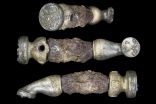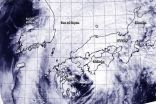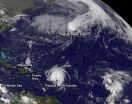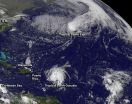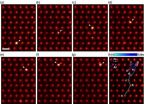Cushing's syndrome: LCSB researchers characterize a new tumor syndrome
2014-10-14
(Press-News.org) Scientists at the Luxembourg Centre for Systems Biomedicine (LCSB) of the University of Luxembourg have published their findings that mutations in a gene known as "ARMC5" promote the growth of benign tumours in the adrenal glands and on the meninges: ARMC5 appears to belong to the group of so-called tumour suppressor genes. It is the first time in years that scientists have characterized such a gene.
The ARMC5 gene was discovered by independent workgroups studying benign tumours – so-called adrenal adenomas – in connection with Cushing's syndrome. In this disease, the body produces too much of the hormone cortisol. Now, for the first time, a mutation of ARMC5 has been characterized as the cause behind the growth of meningeal tumours. The results on this tumour syndrome, obtained by the group of Dr. Patrick May and PD. Dr. Jochen Schneider together with colleagues from Charité Berlin (Dr. Ulf Elbelt) and the Universities of Würzburg (Prof. Dr. Bruno Allolio) and Cologne (Dr. Michael Kloth), have been published recently in the "Journal of Clinical Endocrinology Metabolism" ( DOI: http://dx.doi.org/10.1210/jc.2014-2648).
Cortisol is an important hormone. It influences many metabolic pathways in the body and has a suppressing effect on the immune system. Accordingly, it is commonly employed as an anti-inflammatory medication. Prolonged, elevated levels of cortisol in the body can lead to obesity, muscular dystrophy, depression and other symptoms. To maintain the correct concentration in the blood, the body has a refined regulation system: Certain areas of the brain produce the hormone corticotropin as a stimulator of cortisol release; the actual formation of cortisol takes place in the adrenal glands. As the concentration of cortisol in the blood rises, the brain reduces the production of corticotropin.
In search of the causes of Cushing's syndrome, scientists recently encountered certain genetic causes of benign tumours of the adrenal cortex. Growth of these adrenal cortex adenomas is based on a combination of hereditary and spontaneous mutations: It affects people in whom one of two "alternative copies" – one of the so-called alleles – of the ARMC5 gene is mutated from birth. If the second allele of ARMC5 later also undergoes a spontaneous mutation in the adrenal cortex, then the gene no longer functions. "What is interesting is that the failure of ARMC5 has no direct influence on cortisol production. However, because the tumour cells multiply faster than other body cells, and the number of cells in the tumour increases, the blood cortisol level rises in the course of the disease", says Dr Schneider. Then, the cortisol level in the body rises and ultimately results in the onset of Cushing's syndrome.
When other scientific workgroups discovered that further benign tumours – in this case meningeal tumours – occur more often in ARMC5-Cushing families, the group of Patrick May and Jochen Schneider sequenced the ARMC5 gene and studied it using bioinformatic techniques. "We demonstrated for the first time, in a patient with an adrenal cortex tumour and simultaneously a meningeal tumour, that somatic, that is non-hereditary, ARMC5 mutations are present in both tumours. This observation suggests that ARMC5 is a true tumour-suppressor gene."
It must now be explored, Schneider continues, to what extent patients with adrenal cortex tumours ought to be screened for simultaneous presence of meningioma, and in which other types of tumour ARMC5 mutations are responsible for tumour growth: "Building upon that, we can learn whether the gene and the metabolic pathways it influences offer new approaches for treating the tumour syndrome."
INFORMATION:
ELSE PRESS RELEASES FROM THIS DATE:
2014-10-14
University of Leicester archaeologists have made a "once-in-a-career" discovery of the decorated bronze remains of an Iron Age chariot.
A team from the University's School of Archaeology and Ancient History has unearthed a hoard of rare bronze fittings from a 2nd or 3rd century BC chariot which appears to have been buried as a religious offering.
The archaeologists found the remains during their ongoing excavation of the Burrough Hill Iron Age hillfort, near Melton Mowbray, Leicestershire.
The School has led a 5-year project there since 2010, giving archaeology students ...
2014-10-14
Parkinson's disease is strongly linked to the degeneration of the brain's movement center. In the last decade, the question of where the disease begins has led researchers to a different part of the human anatomy. In 2003, the German neuropathologist Heiko Braak presented a theory suggesting that the disease begins in the gut and spreads to the brain. The idea has since, despite vocal critics, gained a lot of ground. Researchers at Lund University in Sweden now present the first direct evidence that the disease can actually migrate from the gut to the brain.
The so-called ...
2014-10-14
Chemists at Ludwig-Maximilias-Universitaet (LMU) in Munich have synthesized a ferromagnetic superconducting compound that is amenable to chemical modification, opening the route to detailed studies of this rare combination of physical properties.
Superconductivity and ferromagnetism – the "normal" form of magnetism, such as that found in the familiar horseshoe magnet – are like chalk and cheese: They generally don't go together. Ferromagnets are magnetic because the parallel alignment of adjacent electron spins in the iron atoms generates a strong internal ...
2014-10-14
The climate is getting warmer, the ice sheets are melting and sea levels are rising – but how much? The report of the UN's Intergovernmental Panel on Climate Change (IPCC) in 2013 was based on the best available estimates of future sea levels, but the panel was not able to come up with an upper limit for sea level rise within this century. Now researchers from the Niels Bohr Institute and their colleagues have calculated the risk for a worst-case scenario. The results indicate that at worst, the sea level would rise a maximum of 1.8 meters. The results are published ...
2014-10-14
WASHINGTON, Oct. 13, 2014 — Whether it's a plain cheese, a deep-dish stacked with meats or a thin-crust veggie delight, there's just something about pizza that makes it delicious. There's a lot of chemistry that goes into everything from dough to sauce to toppings to, of course, cheese. There's also a very specific chemical reaction at work on every single slice, no matter what toppings you choose. Check out the latest episode here: http://youtu.be/tOkCgAwhh9U.
Subscribe to the series at Reactions YouTube, and follow us on Twitter @ACSreactions to be the first to ...
2014-10-14
BUFFALO, N.Y. — An oral biologic medication has successfully treated chronic, precancerous inflammation in the intestine, according to results of an animal study authored by an MD/PhD student in the University at Buffalo School of Medicine and Biomedical Sciences.
The study is featured on the cover of the current issue of Cancer Research; it was published online ahead of print in September. The journal's editors characterized the study's findings as "striking."
Inflammatory cells in the colon, or polyps, are very common after the age of 50. The average 60-year-old ...
2014-10-14
Tropical Storm Vongfong continues to weaken as it tracks across the big islands of Japan, and NASA satellite data showed that westerly wind shear is taking its toll on the storm's structure.
On Oct. 12 at 0500 UTC (1 a.m. EDT), the MODIS instrument aboard NASA's Aqua satellite captured an image of Tropical Storm Vongfong approaching Japan. Despite weakening to a tropical storm, Vongfong still appeared to have an eye as its northeastern quadrant blanketed the large island of Kyushu, Japan. By 11 a.m. EDT, Maximum sustained winds had dropped to 55 knots (63 mph/102 kph). ...
2014-10-14
The Eastern Caribbean islands were getting the brunt of Tropical Storm Gonzalo as the storm slowly moved through on Oct. 13. NASA's Terra satellite and NOAA's GOES-East satellite provided data on the storm. Gonzalo is the sixth named storm in the Atlantic Ocean Hurricane Season.
On Oct. 12 at 15:00 UTC (11:00 a.m. EDT), NASA's Terra satellite flew over Tropical Storm Gonzalo while it moved over the Lesser Antilles. The MODIS instrument captured a visible image of the storm that showed a concentration of strong thunderstorms around the center of circulation and in a thick ...
2014-10-14
The fifth named Atlantic storm didn't maintain hurricane status long. Fay became a hurricane late on Oct. 12 and by early on Oct. 13, had weakened back to a tropical storm.
A visible image from NOAA's GOES-East satellite on Oct. 13 at 1145 UTC (7:45 a.m. EDT) showed Tropical Storm Fay northeast of Bermuda and Tropical Storm Gonzalo over the Lesser Antilles. Fay appeared circular, but didn't have the signature shape of a tropical storm like Gonzalo, with bands of thunderstorms spiraling into the center. The image was created by the NASA/NOAA GOES Project at NASA's Goddard ...
2014-10-14
OAK RIDGE, Tenn., Oct. 13, 2014 -- Researchers at the Department of Energy's Oak Ridge National Laboratory have obtained the first direct observations of atomic diffusion inside a bulk material. The research, which could be used to give unprecedented insight into the lifespan and properties of new materials, is published in the journal Physical Review Letters (06 October 2014, DOI: 10.1103/PhysRevLett.113.155501).
"This is the first time that anyone has directly imaged single dopant atoms moving around inside a material," said Rohan Mishra of Vanderbilt University who ...
LAST 30 PRESS RELEASES:
[Press-News.org] Cushing's syndrome: LCSB researchers characterize a new tumor syndrome
